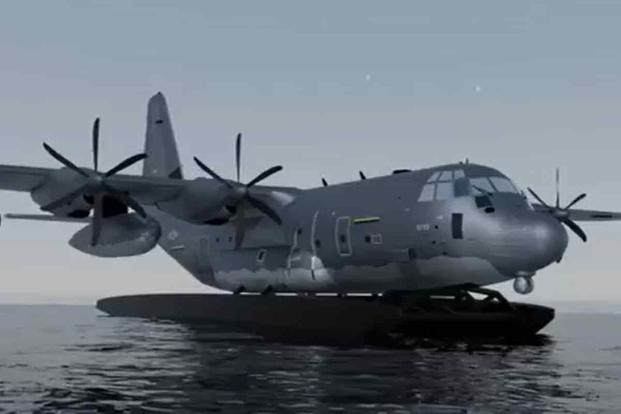
The Air Force Special Operations Command (AFSOC) has plans to begin its MC-130J Commando II Amphibious Capability – or MAC – program. MAC is an amphibious, pontoon-equipped version of the MC-130J Commando II used by its special operators. AFSOC hopes to be able to fly a prototype of the aircraft in less than a year and a half.
Seaborne equipment is of special interest to AFSOC as its focus shifts to areas near seashores or lakes. Aircraft that do not need to land on a physical runway would be able to do a lot more to infiltrate troops, get them out, and recover trapped or wounded personnel. This will be even more important in a future war, which might result in situations where land forces, bases, or equipment are endangered by the enemy.
“Seaborne operations offer nearly unlimited water landing zones, providing significant flexibility for the joint force,” Lt. Col. Josh Trantham, AFSOC’s deputy division chief for science, systems, technology and innovation, said.
The MC-130J is used to fly secret missions – often at night and at low altitudes – to insert special operations forces into sensitive or hostile areas, get them out, or resupply them. It can also conduct aerial refueling operations. MC-130s are outfitted with electronic warfare capabilities that allow the crews to detect and avoid radar and infrared-guided threats. They are able to fly exceptionally low and in harsh weather conditions due to their advanced computers, radar, and navigation equipment. Additionally, their tails are stronger than the typical C-130 tail in order to facilitate high-speed airdrops.
AFSOC has been working with the Air Force Research Laboratory’s Strategic Development Planning and Experimentation directorate on the amphibious modifications. Currently, prototypes for the modified plane are being tested virtually on the Digital Proving Ground, using digital design, virtual reality modeling, and computer-aided designs. It’s expected that the virtual testing will speed up the production of a physical prototype.
“Being able to experiment with existing technology to evaluate design tradeoffs and test a new system before ever bending metal is a game-changer,” said Maj. Kristen Cepak, AFSOC’s technology transition branch chief.
